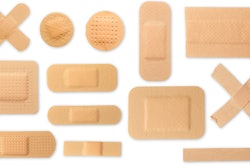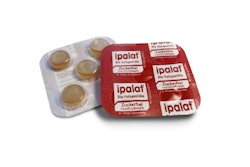Given the volume of saleable returns that wholesale distributors handle, the returns process could become very onerous under DSCSA requirements in 2019. Per 582(c)(4)(D):
“... upon receipt of a returned product that the Wholesale Distributor intends to further distribute, before further distributing such product, the wholesale distributor shall verify the product identifier, including the standardized numerical identifier for each sealed homogeneous case of such product or, if such product is not in a sealed homogeneous case, verify the product identifier, including the standardized numerical identifier, on each package.”
In general, approximately 2-3% of total sales are saleable returns. For large pharmaceutical distribution centers, the numbers of return units per day could stretch into the thousands, or tens of thousands.
As an outgrowth of the 2019 saleable returns pilot work, the Healthcare Distribution Alliance (HDA) has been exploring a verification router service (VRS) as an option for compliance. At HDA’s recent Traceability Seminar, group members discussed the background, progress and goals.
What is a VRS?
As was explained at the seminar, a VRS is an interoperable solution used to manage the acceptance, formatting and delivery of requests and responses in order to support DSCSA verification requirements and other business requirements as defined between trading partners.
The idea is for the VRS to perform the following activities:
-
Accept Product Identifier (PI) information from an authorized Requestor via an interface or manual entry using a VRS portal
-
Determine the routing location to where the verification request will be submitted based on the Global Company Prefix (GCP) or Global Trade Item Number (GTIN) provided by Requestor and master data from Responder
-
Format and send the verification request to Responder’s system directly or to a VRS used by the Responder
-
Obtain the response and format/send or display to requestor
-
Provide an electronic record/audit trail capability
As David Colombo, Director, Life Sciences Advisory Services at KPMG, LLP, noted at the seminar, “To meet that milestone in 2019, we needed something efficient, effective and electronic. We developed nine different scenarios and two made sense [including the VRS]. Even though serialized product will be there, serialized data is a different challenge.”
In 2017, an HDA working group was assembled, establishing requirements and governance workstreams, and was later expanded to include interested solution providers. The group conducted several Web-Ex meetings and four in-person workshops throughout the year, ultimately developing business requirements, a solution architecture reference and draft administrative and governance requirements.
“We see serialization as a key initiator of patient safety. We want to ensure continued access, and don’t want products being held up at distribution facilities,” said Jayamary Kala, Serialization Solutions Architect at Genentech Inc. “It’s quite a long journey implementing solutions in the warehouse and packaging lines, and expanding them to CMO lines. The goal is to help us solidify solutions that meet the requirement and ensure that products move.”
2018 Goals
This year, the group plans to design, build, test and perform solution refinement activities. After a report-out from pilot testing, they plan another round of refinement. The overall objective is that “Requestors and Responders are positioned to conduct system qualification and implementation activities throughout 2019.”
After the 2019 DSCSA requirements kick in, the idea is that when a return occurs, a distributor would scan the data matrix, format and send the verification request to the VRS provider, which would understand through master data where the request needs to be routed. The verification request goes to the manufacturer (either directly or from another VRS), and checks if the Product Identifier is present. If it is present in that database, it is verified. If it’s not in the database, then there may be problem.
Supply chain partners will have a set amount of time to process returns, and need an efficient way to perform verification requests. “Think about your returns process. How will you make requests? How will you connect in?” said Michael Rowe, Manager of Operations Technology (Track & Trace) at Cardinal Health, Inc. “We want to get a sense of the VRS environment and ecosystem. Will we still get the uptime and speed we need with the millions of returns? After solution refinement, we need to look at the volume of data to be sure we can handle that.”



















